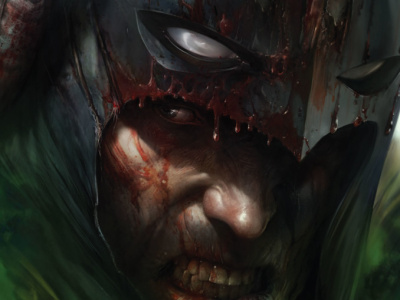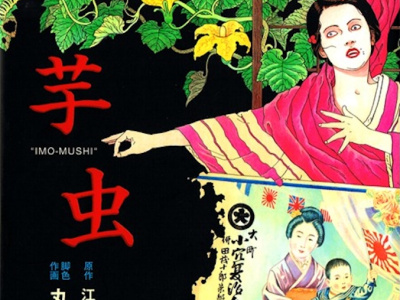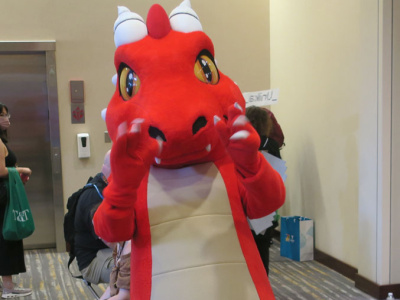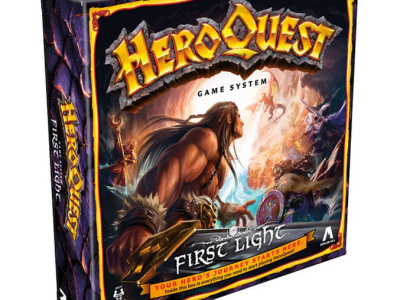ICv2 recently caught up with Dark Horse Comics founder and CEO Mike Richardson to get his reflections on 30 years in the comics industry. In Part 1, he looks at how the business has changed over the past 30 years. In Part 2, he looked at Dark Horse today, answers the exit question, and looks ahead at where comics will be 30 years from now.
Dark Horse is celebrating its 30th Anniversary; that’s a momentous occasion! What’s different from 30 years ago?
We’ve seen a dramatic change in the market. It’s a very different market than it was back then. I think that back then the industry was pretty much male-dominated, very few women in the comics, very few woman customers. I used to work the counter of my retail store and the women who came into the store were usually bringing their sons.
Now we have a growing female readership that’s a big force in the industry. I think the shojo movement really brought a lot of women into comics. When I first heard that teenage girls were buying shojo in the bookstores, and sitting on the floors and reading them in the manga section, I had to see it for myself. I went out to a local Borders and walked in, there were about 12 girls sitting on the floor reading manga.
The shojo phenomena has faded from where it was at its height. I think it was aimed generally at teenage girls. Many of those girls are young women now and many of them stayed in the industry and became comics readers. There was some study I remember from the 90s that said that at the comic shops, nearly 90% of customers were male. I think this is a great thing to expand the readership and certainly something that the industry needed.
The shojo movement also influenced a whole generation of female comic artists. You see the style has infiltrated probably every genre in comics when you see the female writers and artists gaining stature and being among the leaders in the industry.
Looking at Dark Horse’s Zodiac Starforce, you can certainly see the manga influence there.
Sure. You see it in a lot of places. You see it in the superhero books and certainly women bring a different perspective to those types of genre, and it makes for some interesting reading. It’s good for the industry.
You talked about the audience and the content and the creators. What about the distribution?
The market has changed dramatically as far as the distribution of comics. When I started our first retail store, we bought a lot of our product from the local ID [Independent Distributor], the local magazine wholesalers that filled the racks at local grocery or variety stores (there aren’t any variety stores anymore either). Where you saw spinner racks, or magazine racks, those were generally filled by an ID. That was a whole different market. They don’t even distribute comic books anymore, but that was a huge part of the market.
When we couldn’t get comics through the direct market sales system we’d go down to our local ID and pick up bundles of them. I remember when Man of Steel came out. (It’s hard to remember what a big deal that was at the time, but for those who don’t remember, Man of Steel #1 was the relaunch of the whole Superman myth. DC had finally decided that their whole continuity had gotten too convoluted so they decided to start fresh. So Man of Steel #1 was where Superman was going to start. They did the first Crisis on Infinite Earths, but Man of Steel was the first Superman comic.) We went down to the local ID and bought every copy that was going to be distributed in Portland. I think we had 1500 copies. Our local distributor at the time was Richard Finn, he ran out (Second Genesis was the name of his distribution company.) He sold out of that book, so for quite a while we were the only ones that had them at our stores. We made them available to everyone. We even sold them to some of the retailers we knew who had run out. That was the beauty of having a local ID in those days.
Now, as you know, the direct sales market is where the pamphlets are sold and Diamond is the only distributor. In those days there were 19 distributors when we got into the business. Now there’s one, so that’s a dramatic change. That change from 19 direct sales distributors to one and the loss of the ID market has had a big effect on us as a publisher, and every publisher, from the way things used to be.
When there was competition among 19 different entities vying for your business, they were all concerned that they would not have enough books to service their retail clients. They wanted to make sure they had them, so every distributor over-ordered the books 10 - 20% (no more than that if they were smart).
When that particular part of the market collapsed and we ended up with one distributor, those extra books were no longer being carried by the remaining distributors and that burden was put onto the publisher. Direct market sales are guaranteed. So when all of those different distributors over-ordered the books to make sure they had them—those were guaranteed sales.
Well when that part of the direct market disappeared, those extra sales were not only gone, but we had to publish extra books over what we thought we could sell in order to make sure, as a publisher, we could supply the market. So that had an impact on sales, a very different system than today.
And there weren’t any bookstore sales either in ’86.
No, in the early days of Dark Horse, I used to go what was called the ABA [now BEA], the big convention for traditional booksellers and traditional bookstores, and try to persuade book distributors to pick up our line almost from the first year, and they weren’t interested. Scholastic and all the big distribution houses--tried to get them interested. Didn’t have any luck in those early days. And then over the years, Terry Nantier took a plunge into the bookstore distribution. I believe our first book store deal was with Terry and his distribution system.
What was the comic store community like when you started versus today. Do you have any idea how many comic books stores there were in the country in ’86?
I don’t remember exactly for ‘86, but I know we peaked at near the 8,000 or 9,000 range in one of the peak booms, in the early 90s. So around that time we were approaching about 9,000 or 10,000 stores. A lot of them were hobby shops and baseball card shops. There was a phenomenon in the card industry where Topps had controlled the card market for many years, and Topps would split their allotments over several shipments over the course of a year. You were always shorted on the cards you really wanted and you had to make sure you paid attention so you got the cards as they were released. You went to your local candy wholesaler, usually, to get your cases of Topps cards to put in your store.
Well, there was a high demand as the card market started booming, then other card publishers came into business (Donruss and Fleer and some others) and they started releasing their cards in one big release early. That forced Topps to do it. The card market had been booming, with a healthy collectible business at that time. Then we ran into shortages and all of those things that those of us who were around remember, going to the local Costco and getting in line for that case of cards that was coming in.
What happened is a glut of cards hit the market, far more cards than the demand, and it killed that collectible market. You had all these card shops that had grown up during that card boom and they were looking for something else to put in their stores. That helped fuel that [comics] boom in the 90s. They started bringing in comics. A lot of those stores were not really comics collectors and they started speculating on the comics much the same way they had speculated on the trading cards.
It contributed to the artificiality of that comics boom and we got a fever pitch for books that were selling 800,000 or 900,000 copies that were supposedly worth big dollars. We all know that anything that prints over 10,000 probably isn’t that collectible because there are a lot of them out there. As a retailer, books that used to demand high prices, they’d come in and we could buy them by the comic box full for very low prices because people were trying to get rid of their books. What that caused is a lot of people who bought those comics at a high price and then went to sell them back and found out they weren’t worth anything because every retailer had 25 of them in their backroom.
It created a disillusionment with the comic collecting business. Having been a retailer, it’s one of the reasons we stayed out of pushing the collectible aspects of comics. We’ve always pushed the trades and tried to keep the books affordable and easily obtainable. But then we had the collapse as a direct result of all of that speculating that came, partially fueled by the card speculation that went just before.
Even with that boom and bust in the middle, there still have to be a lot more comic stores today than there were in 86, aren’t there?
It was such an exciting time; 86 was another boom in comics that is pretty much forgotten now. It was the black and white boom, and it’s what allowed Dark Horse to come into the business. Basically, because of the direct sales market and Phil Seuling’s idea of non-returnable comics, the direct sales market was really starting to go at that point. You had a lot of comic creators that were eager to do something different than what had been done by basically Marvel and DC, which of course dominated the industry then as they do now. You saw a lot of new fans coming in because of new types of work that were being distributed into the direct sales market.
A company like Dark Horse could never have started before that, because in the ID distribution system, you might print 100,000 comics and sell 10,000, and whatever you didn’t sell was all returnable, so that’s a bad business model. What the direct sales market did was allow a publisher to come into business, solicit the book, and then print exactly what he had sold. That how Dark Horse was started, we had Dark Horse Presents #1. We had hoped to sell 10,000 copies, that was our break-even at the time, and we sold 50,000 copies, so we could print 55,000 and know that we were making a lot of money. We jumped right on board and followed that up with a book that we did with Jim Smith, a book called Boris the Bear, and that sold 80,000 copies.
Using that non-returnable, direct sales market, we were able to get a foothold to build off and we just added titles as the years went by.
Bookstore distribution these days is a big part of our business for a variety of reasons. The culture has changed, and by that I mean, not the comics culture, but our pop culture has changed. Bookstores are more willing to carry graphic novels, as you can see in any bookstore. We have a population that is older, has more disposable income, and is more willing to buy graphic novels, so it’s changed the market pretty dramatically.
Click here for Part 2.

On 30 Years of Comic Publishing
Posted by ICv2 on May 19, 2016 @ 4:55 am CT
MORE COMICS
From Dynamite Entertainment
August 8, 2025
Here's a preview of Space Ghost #1, published by Dynamite Entertainment.
Dark, Erotic Manga Based on Short Story by Edogawa Rampo
August 8, 2025
Maruo brings his signature “erotic grotesque” style to a dark tale by writer Edogawa Rampo.
MORE NEWS
Thursday July 31, 2025; 'D&D,' 'Riftbound,' and More!
August 8, 2025
The story of Gen Con 2024, as told through ICv2's staff photos, began on the morning of Thursday July 31, 2025 on the convention hall floor.
New Expansion Set for the Classic Fantasy Board Game
August 8, 2025
Hasbro will release HeroQuest: First Light, a new expansion for the classic fantasy board game, into retail.








